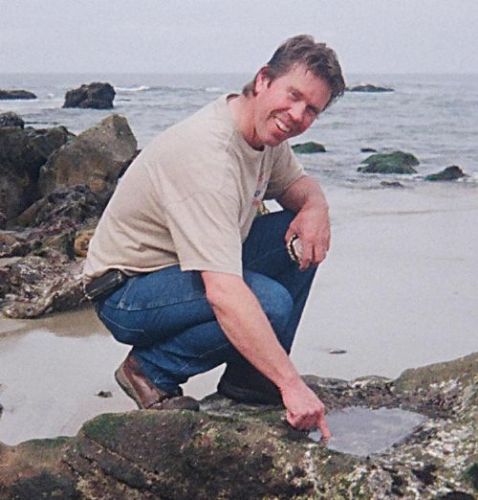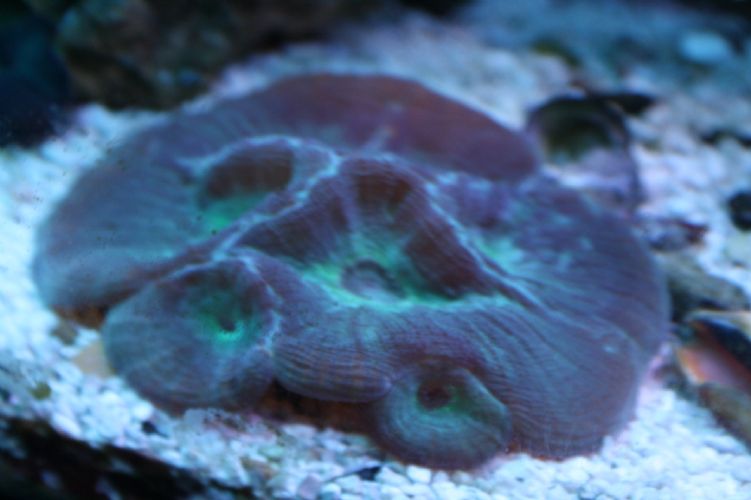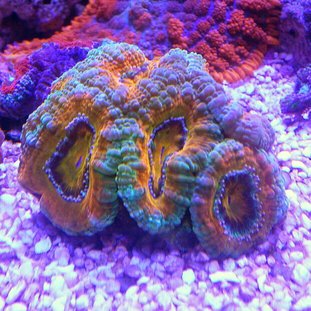| Author |
 Topic Search Topic Search  Topic Options Topic Options
|
CMcTay 
Guest


Joined: February 17 2015
Location: Draper, UT
Status: Offline
Points: 63
|
 Post Options Post Options
 Thanks(0) Thanks(0)
 Quote Quote  Reply Reply
 Topic: Newb question: What exactly is a 'mature' tank? Topic: Newb question: What exactly is a 'mature' tank?
Posted: March 16 2015 at 11:04am |
|
As I read and research, I keep coming across the recommendation that you have a 'mature' or 'well established' tank for certain corals, inverts, etc. I realize this means, generally, a tank that has been up and going for six months to a year or more, depending on who you ask... but why? It seems to have something to do with having a strong biofilter, but I don't completely understand what makes it so much stronger over time if the ammonia input/nitrate output is pretty much the same throughout those six months to a year. Does something over time make these bacteria more 'hardy'? Is there something else about the concept of a 'mature' tank that I'm missing? I'm very curious!
|
 |
Mark Peterson 
Paid Member


Joined: June 19 2002
Location: Murray
Status: Offline
Points: 21436
|
 Post Options Post Options
 Thanks(0) Thanks(0)
 Quote Quote  Reply Reply
 Posted: March 16 2015 at 11:29am Posted: March 16 2015 at 11:29am |
You are on the right track. Come visit MarksReef Coral Farm to get a better understanding in person. I give away LS, pieces of LR and Macroalgae to help a new tank mature faster.
Aloha, Mark  808-345-1049 text/call ahead
|
Reefkeeping Tips, & quick, easy setup tricks:www.utahreefs.com/forum/forum_posts.asp?TID=9244 Pay it forward - become a paid WMAS member 
|
 |
1stupidpunk 
Guest


Joined: June 10 2011
Location: clearfield
Status: Offline
Points: 1172
|
 Post Options Post Options
 Thanks(0) Thanks(0)
 Quote Quote  Reply Reply
 Posted: March 16 2015 at 11:47am Posted: March 16 2015 at 11:47am |
|
Im no expert but generally a "mature" tank refers to a tank at least 1 year old. The actual age of the tank really isn't significant but really the time for all the healthy biologicals to develop. The amount of bacteria and microfauna in a 4 month old tank will be greatly less than in a properly established/maintained 1 year old tank.
|
 |
CMcTay 
Guest


Joined: February 17 2015
Location: Draper, UT
Status: Offline
Points: 63
|
 Post Options Post Options
 Thanks(0) Thanks(0)
 Quote Quote  Reply Reply
 Posted: March 16 2015 at 12:18pm Posted: March 16 2015 at 12:18pm |
^ This is more or less what I've read everywhere, but I'm curious as to what the 'healthy biologicals' are and what makes them more healthy over time, I guess. Why does the amount of bacteria increase and in what ways are they beneficial?
My awareness and understanding of how the biofilter works is very dim, obviously, but it seems like there is exactly enough bacteria to manage the amount of ammonia that is put out by my fish/extra food. Any more and they would starve, any less and I wouldn't have a working biofilter... right? How does this bacteria growth flourish and get stronger over time when they aren't getting fed any more than they ever were?
|
 |
Pete Moss 
Guest


Joined: March 26 2010
Location: Roy UT
Status: Offline
Points: 2114
|
 Post Options Post Options
 Thanks(0) Thanks(0)
 Quote Quote  Reply Reply
 Posted: March 16 2015 at 12:36pm Posted: March 16 2015 at 12:36pm |
The age of the tank ultimately does not determine it's state of stability ( maturity ) A mature tank is a tank that has reached a balanced, saturated level of beneficial bacteria, micro fauna, and all other forms of life in the reef. Often times this includes micro-organisms that we can't see, nor can we track.Populations have a direct correlation to available food. Once the food/bio-life ratio has met equilibrium a tank can be considered "mature." At this point, waste is efficiently processed through the bio-filtration, and the mortality rates of all organisms is in balance with their "birth" rates. Below is a very basic graph I threw together demonstrating a standard population growth model. The "Desired Population" is what the population will be when everything has met an equilibrium. As time goes on, the population level gets closer and closer to equilibrium.  The longer amount of time that you have, the more likely it is for a population to reach stability. The longer amount of time that you have, the more likely it is for a population to reach stability.
The introduction of certain populations can decrease the time it takes to reach biological stability, in this case referred to as maturity. This is why people add bottled bacteria, live rocks, live sand, copepods, amphipods and other micro organisms to their systems to get the cycle going faster. Ultimately nothing can instantly cycle or mature a reef tank. You can however instantly bring the cycle within tolerable ranges for fish and invertebrates with the introduction of organisms if adequate populations are introduced. Any major swings in your reef can cause a disruption in the balance, which can cause a population destruction that effects all of the populations in the tank ( tank crash etc ). Swings in water conditions will have a negative impact on the stability of your reef. That's why it's important to have a light schedule, an auto top-off, a regular feeding schedule and regular water changes.
That's my best shot at explaining it over the forums without going too in-depth. If you want to get into the finer details, shoot me a PM.
Edited by Pete Moss - March 16 2015 at 12:41pm
|
|
125g 90g 2x33g 34g
What stores do I recommend?
Up North: Bill ( Saltwater Paradise 801-317-8115 )
Down South: Jerry ( Reef On 801-563-0600 )
Member of GCFB
|
 |
CMcTay 
Guest


Joined: February 17 2015
Location: Draper, UT
Status: Offline
Points: 63
|
 Post Options Post Options
 Thanks(0) Thanks(0)
 Quote Quote  Reply Reply
 Posted: March 16 2015 at 12:50pm Posted: March 16 2015 at 12:50pm |
|
That graph made a surprising amount click for me, haha. I always assumed it was a slow ramp up until it hit the perfect spot, and then it was done, and that moment was when your tank was finished cycling. That clarified a ton for me, thank you! :D
|
 |
Pete Moss 
Guest


Joined: March 26 2010
Location: Roy UT
Status: Offline
Points: 2114
|
 Post Options Post Options
 Thanks(0) Thanks(0)
 Quote Quote  Reply Reply
 Posted: March 16 2015 at 12:55pm Posted: March 16 2015 at 12:55pm |
|
You're welcome! Next time you're over come loaded with all these questions and you can pick my brain hahaha.
|
|
125g 90g 2x33g 34g
What stores do I recommend?
Up North: Bill ( Saltwater Paradise 801-317-8115 )
Down South: Jerry ( Reef On 801-563-0600 )
Member of GCFB
|
 |
Mark Peterson 
Paid Member


Joined: June 19 2002
Location: Murray
Status: Offline
Points: 21436
|
 Post Options Post Options
 Thanks(0) Thanks(0)
 Quote Quote  Reply Reply
 Posted: March 16 2015 at 8:28pm Posted: March 16 2015 at 8:28pm |
That's a good explanation John. I have also found that it differs according to the setup. If LS, LR, Macroalgae and LW from another good tank are used from the start and the bioload of fish is added slowly and conservatively, then it is sort of a gradual ramp up in biofiltration toward maturity as CMcTay was thinking. IMO, there is no perfect spot, but there is a balancing act all along the way as your graph illustrates.
The 75 gallon expansion to my coral farm was set up with lots of live stuff and there was No Cycle, No brown algae and no high pollution levels. Granted, I used a fair amount of the four live components because I have access to lots of that stuff. I also turned on the lights 24 hrs/day for the first week which powerfully ate up pollution. The Macroalgae grew fast.  I don't typically recommend beginners move this quickly.  But for the record, I added 3 fish at day three; 4" Yellow Coris Wrasse, YT Blue Damsel, 5" Lawnmower Blenny. All are healthy and happy three weeks into the life of this setup.
Aloha, Mark  MarksReef Coral Farm |
Reefkeeping Tips, & quick, easy setup tricks:www.utahreefs.com/forum/forum_posts.asp?TID=9244 Pay it forward - become a paid WMAS member 
|
 |
Pete Moss 
Guest


Joined: March 26 2010
Location: Roy UT
Status: Offline
Points: 2114
|
 Post Options Post Options
 Thanks(0) Thanks(0)
 Quote Quote  Reply Reply
 Posted: March 17 2015 at 7:38am Posted: March 17 2015 at 7:38am |
 Mark Peterson wrote: Mark Peterson wrote:
That's a good explanation John. I have also found that it differs according to the setup. If LS, LR, Macroalgae and LW from another good tank are used from the start and the bioload of fish is added slowly and conservatively, then it is sort of a gradual ramp up in biofiltration toward maturity as CMcTay was thinking. IMO, there is no perfect spot, but there is a balancing act all along the way as your graph illustrates.
The 75 gallon expansion to my coral farm was set up with lots of live stuff and there was No Cycle, No brown algae and no high pollution levels. Granted, I used a fair amount of the four live components because I have access to lots of that stuff. I also turned on the lights 24 hrs/day for the first week which powerfully ate up pollution. The Macroalgae grew fast.  I don't typically recommend beginners move this quickly.  But for the record, I added 3 fish at day three; 4" Yellow Coris Wrasse, YT Blue Damsel, 5" Lawnmower Blenny. All are healthy and happy three weeks into the life of this setup.
Aloha, Mark  MarksReef Coral Farm |
Naturally there is no "perfect spot" as conditions would have to remain absolutely constant for their to be a true stabilization, which is never going to happen in a reef tank. I already mentioned you can add live rock and live sand from other setups to "fast forward" through time to achieve stability sooner.You introduced a 75 gallon aquarium into a system of over 200 gallons. Of course it was ready for fish quickly. I promise you still had a cycle, if you ran tests every day you would have seen it. The cycle was just within tolerable ranges for the health of your fish. ( small bumps on the graph )
Edited by Pete Moss - March 17 2015 at 7:57am
|
|
125g 90g 2x33g 34g
What stores do I recommend?
Up North: Bill ( Saltwater Paradise 801-317-8115 )
Down South: Jerry ( Reef On 801-563-0600 )
Member of GCFB
|
 |
Mark Peterson 
Paid Member


Joined: June 19 2002
Location: Murray
Status: Offline
Points: 21436
|
 Post Options Post Options
 Thanks(0) Thanks(0)
 Quote Quote  Reply Reply
 Posted: March 17 2015 at 8:23am Posted: March 17 2015 at 8:23am |
The 75 gal system stands apart from the 200 gal system. If a person has never seen the effect, it's difficult to believe. I wouldn't have believed it myself if I hadn't seen it. The hobby has been so ingrained with "The Cycle".  Yes, there is decomposition going on, but there is no visible evidence of a Nitrogen cycle, because an ample amount of algae, illuminated 24 hrs/day, eats up the Nitrogen compounds right as they enter the water column.
|
Reefkeeping Tips, & quick, easy setup tricks:www.utahreefs.com/forum/forum_posts.asp?TID=9244 Pay it forward - become a paid WMAS member 
|
 |
Pete Moss 
Guest


Joined: March 26 2010
Location: Roy UT
Status: Offline
Points: 2114
|
 Post Options Post Options
 Thanks(0) Thanks(0)
 Quote Quote  Reply Reply
 Posted: March 17 2015 at 8:31am Posted: March 17 2015 at 8:31am |
Have you ever seen a virus with your own eyes? Ever seen a million bucks? Those still exist. There is science behind the cycle Mark, it's not a mysterious fable fostered from generations of hand me down stories. Science is cool, because whether you believe it or not, it's true. There is a bacteria population in your tank. They need oxygen and ammonia, it's their "food." When that food is depleted there is a spike in bacteria. The lack of food and overpopulation of bacteria causes a certain amount of die-off, which feeds ammonia back into the tank. Then we are back at square one which is why it's called a "cycle" If you introduce the right amount of bacteria to your system, you can avoid the worst part of the cycle of course. But if any "dead" rock or sand enters the tank, even when a new fish enters the tank, there is a small cycle. Always. EDIT: Algae helps absorb excess nutrients, but isn't a cure-all fix-all. It can't "eat" nitrates and phosphtaes the minute they enter the water column. Fun read for those interested. Either way I'm done with the discussion. Don't want the presidency getting swarmed with more messages hahaha.
Edited by Pete Moss - March 17 2015 at 3:48pm
|
|
125g 90g 2x33g 34g
What stores do I recommend?
Up North: Bill ( Saltwater Paradise 801-317-8115 )
Down South: Jerry ( Reef On 801-563-0600 )
Member of GCFB
|
 |
Mark Peterson 
Paid Member


Joined: June 19 2002
Location: Murray
Status: Offline
Points: 21436
|
 Post Options Post Options
 Thanks(0) Thanks(0)
 Quote Quote  Reply Reply
 Posted: March 18 2015 at 6:20pm Posted: March 18 2015 at 6:20pm |
I agree with the statements above to a certain extent. It's my opinion that science is most useful when tempered by practicality, experience and wisdom. I'm really glad the question was asked by CMcTay. It's a discussion that all hobbyists ought to consider. It helps us be better reefkeepers. I'd love to read more, so please don't be bashful. When that article hit the hobby, many hobbyists decided to supplement N to get more vibrant algae growth and eat up more P. The fad eventually faded. The use of AA and GFO were found to be much easier methods for removing P.
My 2 cents. Aloha, Mark 
|
Reefkeeping Tips, & quick, easy setup tricks:www.utahreefs.com/forum/forum_posts.asp?TID=9244 Pay it forward - become a paid WMAS member 
|
 |
Summertop 
Presidency


Joined: August 28 2003
Location: South Jordan
Status: Offline
Points: 3270
|
 Post Options Post Options
 Thanks(0) Thanks(0)
 Quote Quote  Reply Reply
 Posted: March 19 2015 at 8:27am Posted: March 19 2015 at 8:27am |
|
FYI: Most of the time when I see the terms "Mature Tank", "Stable Tank", or "Well Established Tanks" it is in relation to a specific fish (or invert).
While the previous explanations are accurate...What they (LFS, web site, etc.) are really saying is, "Make sure there is enough natural food available". That typically comes with having a well established or stable tank.
For example, if you are looking at a Mandarin Goby:
They usually feed on live food (Copepods, shrimp, etc.). So, "they" will say a mature stable tank. Because, these live foods are most likely only growing in a mature stable tank.
|
|
===========
Shawn Winterbottom
|
 |